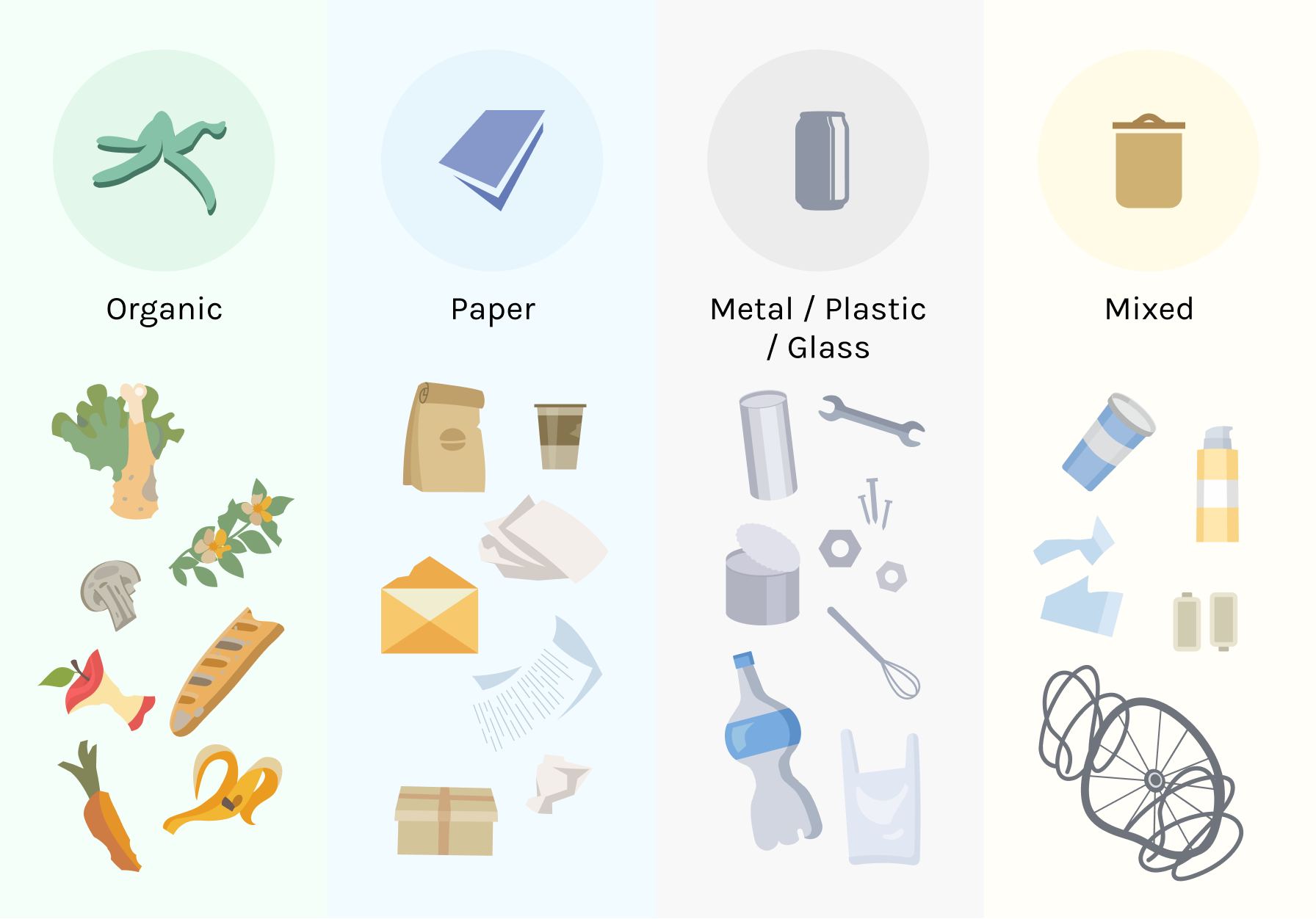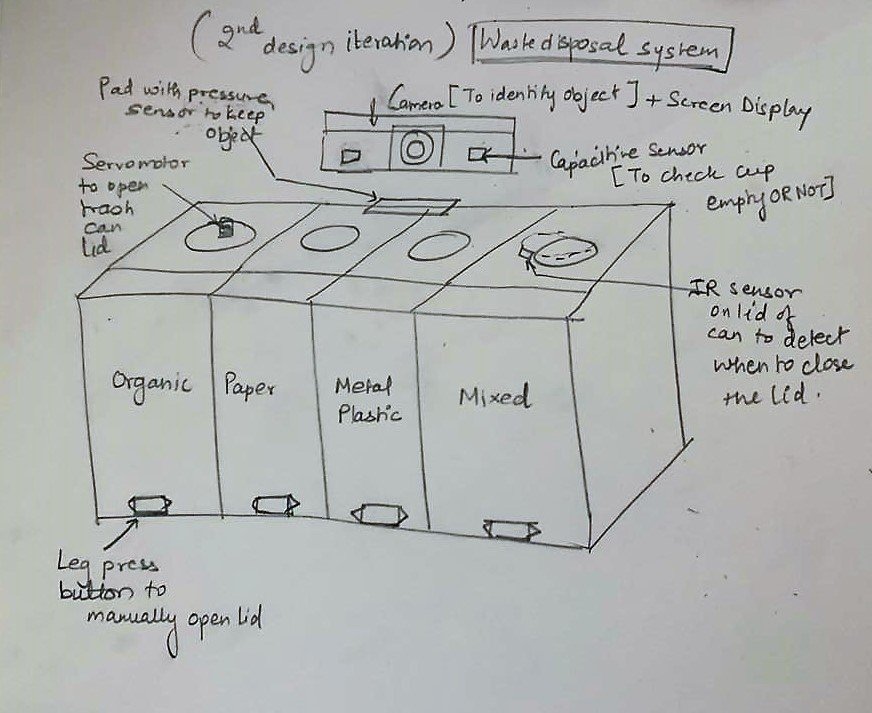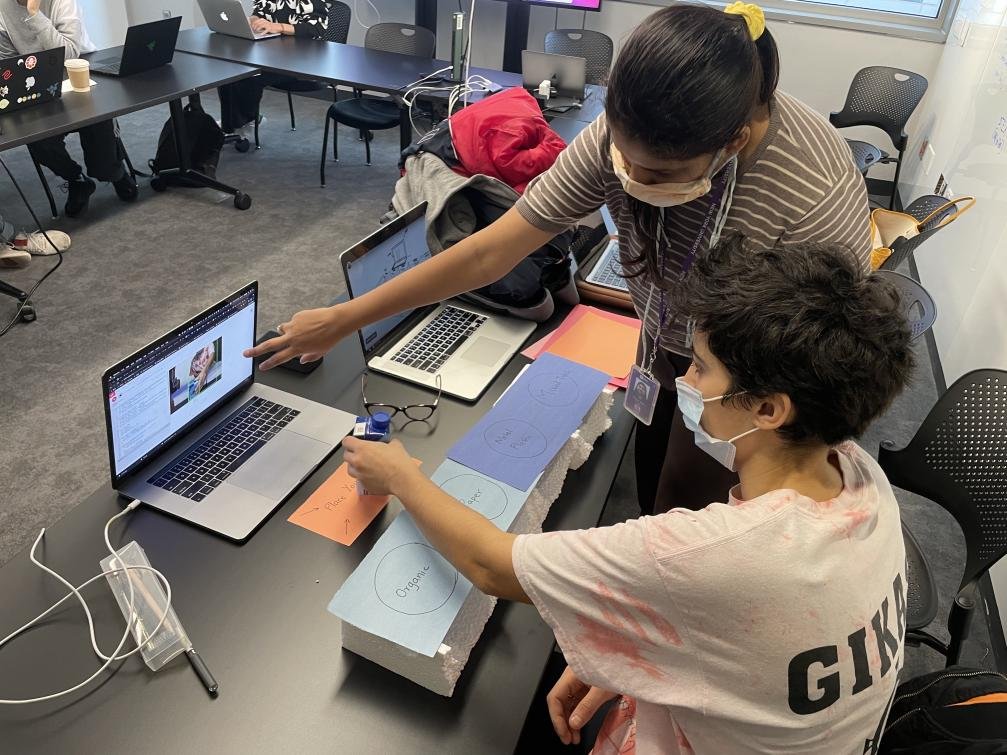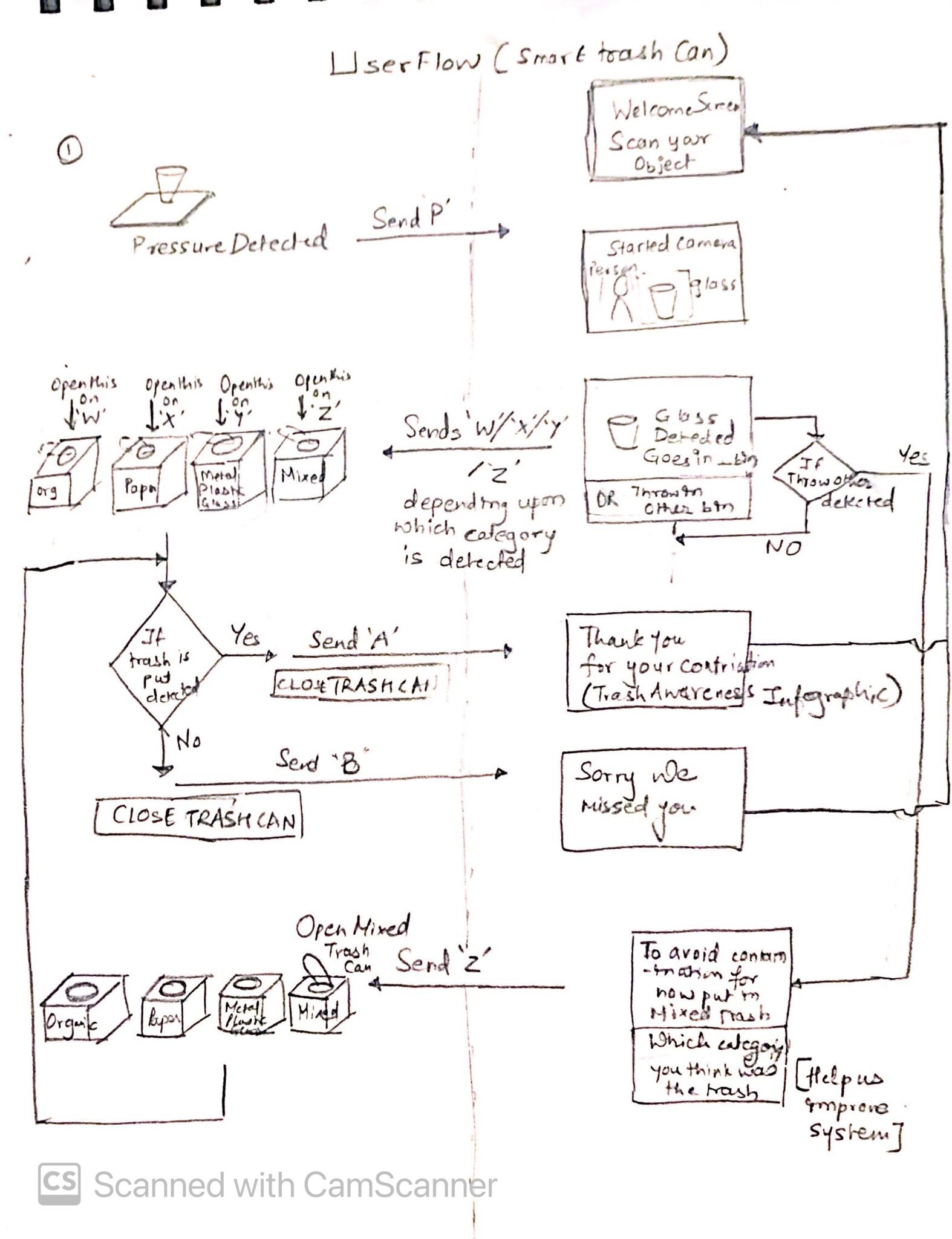
COURSE PROJECT
Smart Trash Can Design
CHAPTER 0: PROJECT OVERVIEW
The world produces over 2 billion tonnes of solid waste every year. This produces greenhouse gases causing global warming. The goal of the project was to design a way to reduce solid waste produced & raise climate awareness. For this project, our team designed an automatic trash sorting system 🔗 that identifies the trash type and helps the user throw trash in the correct trashcan.
The Purpose, Goal and The Outcome
My Role: UX Researcher, Product Designer, Team: 2 people
Duration: 5 weeks (Oct - Nov 2021)
Contribution: UX Research, UX Design, Embedded System Design, Programming
Finding the Why’s
CHAPTER 1: RESEARCH SUMMARY
To understand the the problems faced by the users while disposing trash, I partnered with my teammate to conducted 6 user interviews 🔗. I also conducted secondary research about trash policies in USA & around the world.
Interview Highlights
User 1 : Male, 35, Married (2kids), Jersey City Resident, Works at Finance Company
“I am little aware of the problem of improper waste management. I try to reuse plastic bags. I don’t have time to worry about all this. It’s too much effort“
“Trash disposal system in my area (Brooklyn) is very convenient & nearby. But I am confused at times about trash category. There are not many composting facility nearby.“
User 2 : Female, 32, Single, Brooklyn Resident, Design School Student
“Dumpster facility around here (Brooklyn NYU area) is good. But trash cans can be design better to lift and take out the trash“
User 3 : Male, 39, Married (3kids), Garbage Collector Guy
Affinity Diagram
Key Research Insights
1. Right way of trash throwing process is not easy or convenient.
2. There is ignorance to trash problem.
3. There is confusion about which trash should go where.
CHAPTER 2: PROBLEM DISCOVERY
Problem of Focus
“How might we help users change their behavior, reduce trash contamination, increase the % of recycling and raise climate awareness?”
Concept Sketching
CHAPTER 3: INITIAL DESIGN
For the minimum viable product (MVP) solution, I decided to use COCO-SSD machine learning model to identify trash category and designed trash cans to automate trash throwing in the right bin.
Gaining User Feedback
CHAPTER 4: USER TESTING
I and my teammate conducted user testing using mock models with 4 participants to gain user insights 🔗.
Key Challenges
1. What happens if user doesn’t want to follow instruction?
2. IR sensors are costly $20/piece. Need better alternative.
-
If user wants to throw in different bin then suggested, user can only throw in Mixed Trash Can.
-
If user thinks that system made wrong decision, user can choose to send feedback for trash object category.
-
The trash cans cannot be opened manually. They can only be opened after object is scanned.
-
We replaced IR sensor ($20/piece) with phototransistor ($2/piece).
With all the insights from the users, following features were in final design
CHAPTER 5: FINAL DESIGN
Designing Optimal Solution
We design a ‘Smart Trash Can System’, which is an automatic trash sorting system that uses machine learning model COCO-SSD to identify the trash category and helps the user throw trash in the right trash can.
System Flow
Digital Interface User Flow
1. Understood the mechanics of how much control should be given to User Vs. System.
2. Designed for unexpected routes taken by user.
3. Learnt the factors influencing user motivations & to build to user change behavior.
What I learnt ?
CHAPTER 6: KEY TAKEAWAYS
If I had more time …
PARTING WAYS
1. Direct scanning of object in hand.
2. Gamifying user action to persuade users to throw trash rightly.
3. Using recycling symbol labelling to detect the type of trash.










